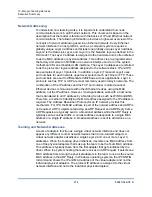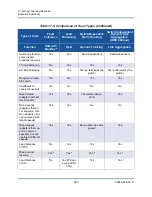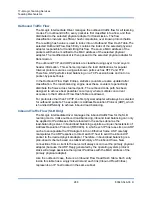
17–QLogic Teaming Services
Executive Summary
279
83840-546-00 D
In this teaming mode, the intermediate driver controls load balancing and failover
for outgoing traffic only, while incoming traffic is controlled by the switch firmware
and hardware. As is the case for Smart Load Balancing, the ASP intermediate
driver uses the IP/TCP/UDP source and destination addresses to load balance
the transmit traffic from the server. Most switches implement an XOR hashing of
the source and destination MAC address.
Link Aggregation (IEEE 802.3ad LACP)
Link Aggregation is similar to Generic Trunking except that it uses the Link
Aggregation Control Protocol to negotiate the ports that will make up the team.
LACP must be enabled at both ends of the link for the team to be operational. If
LACP is not available at both ends of the link, 802.3ad provides a manual
aggregation that only requires both ends of the link to be in a link up state.
Because manual aggregation provides for the activation of a member link without
performing the LACP message exchanges, it should not be considered as reliable
and robust as an LACP negotiated link. LACP automatically determines which
member links can be aggregated and then aggregates them. It provides for the
controlled addition and removal of physical links for the link aggregation so that no
frames are lost or duplicated. The removal of aggregate link members is provided
by the marker protocol that can be optionally enabled for Link Aggregation Control
Protocol (LACP) enabled aggregate links.
The Link Aggregation group advertises a single MAC address for all the ports in
the trunk. The MAC address of the Aggregator can be the MAC addresses of one
of the MACs that make up the group. LACP and marker protocols use a multicast
destination address.
The Link Aggregation control function determines which links may be aggregated
and then binds the ports to an Aggregator function in the system and monitors
conditions to determine if a change in the aggregation group is required. Link
aggregation combines the individual capacity of multiple links to form a high
performance virtual link. The failure or replacement of a link in an LACP trunk will
not cause loss of connectivity. The traffic will simply be failed over to the remaining
links in the trunk.
NOTE
Generic Trunking is not supported on iSCSI offload adapters.
















































